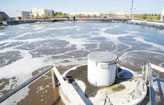Treasures that lie beneath
Updated: 2011-05-13 10:51
By Zhang Zixuan (China Daily European Weekly)
Bounty hunters
Yang Yangmei, a 39-year old fisherman from Qisha village, Zhangzhou, Fujian province, who has been fishing for more than 25 years says that he encountered illegal salvage ships about four years ago. They are not as frequent now, as it was then, he says. "Diving thieves always act at night, even in winter."
Yang adds that fishermen began to find relics within their fishing nets in the late 1990s as fishing equipment and technology began to improve. Yang himself caught three blue-and-white porcelain bowls and a jar in September 2010, but his father, who was also a fisherman, never caught any such thing during his lifetime.
Since 2005 the public security department of the Fujian province has cracked 46 cases of illegal salvage and sale of underwater relics, involving 50 criminal ships, 516 suspects and 7,372 porcelain ware.
"There were hundreds of people fishing for relics in the worst case," says Zhong Zhenyi, deputy commander of the Border Control Department of Fujian Public Security.
To better protect underwater cultural heritage sites, the public security departments of coastal areas are now using radar, video monitors and real-time and round-the-clock surveillance systems to monitor the coastline. At the same time spot checks are also being conducted on ships that come and go from the port.
Much as the law enforcement authorities are sprucing up their act, the bounty hunters are also changing tack. Using olive-shaped 70-horsepower motorboats, that can block bullets and are difficult to catch, the hunters use GPS facility to avoid law enforcement authorities. In cases of confrontation they often hurl the relic back to the sea and retrieve it later using the GPS. "We really feel helpless sometimes when the thieves escape right in front of our eyes," Zhong says.
In 2007 the Yun'ao Border Control Police Station of Guangdong province volunteered to monitor Nan'ao No 1 since the day the shipwreck was found. The 16 police officers have been watching the sea surface above it from an abandoned building 24 hours by turn for more than 1,400 days. The wreck lies 2 nautical miles off the coast. "The fear at night and the loneliness when the festivals come are only known by us," says Zhu Zhixiong, commander of the police station.
"The entire shipwreck has been untouched since the last excavation, which is oddly remarkable among China's underwater shipwrecks," says Cui Yong, leader of the Nan'ao No 1 underwater archeology team.
Heritage protection
China has set up three underwater cultural heritage protection bases in Ningbo, Qingdao and Wuhan. New bases are also being considered in places like Shanghai and Xiamen. The nation is also giving the final touches to a 580-ton professional underwater archeology ship. The ship is expected to ready for use by the end of China's 12th Five-Year Plan (2011-2015).
In June this year, the National Conservation Center for Underwater Cultural Heritage that founded in 2009, will supersede the Underwater Archeology Laboratory to host the sixth session of diving training. Around 30 archeology workers selected from all over the country will receive a three-month diving and underwater excavation training in Ningbo, Xiamen and Guangzhou. A 760,000-yuan's budget has been planned for their tailor-made diving suits.
"We value the training very much," says Liu, director of the center. "Besides the precious experience piled up from previous sessions, we will add training on law and the sense of protection this time to make the session more full-scale."
Jin Tao, 28, who works at the Ningbo Conservation Center for Underwater Cultural Heritage, Zhejiang province, is a trained diver from the fifth batch of underwater archeology diving training in 2009. He participated in the excavation of Nan'ao No 1 in 2010 and spent more than 100 days on the workboat.
"Most trainees now hold a master's degree or above, who own a higher level of theoretical knowledge compared with the first few batches," says Jin, who himself is an archeology-majored master from the Peking University.
In November 2010, the State Administration of Cultural Heritage and the State Oceanic Administration signed an agreement on the strategic cooperation of underwater cultural heritage protection, integrating resources in eight aspects such as underwater archeology and underwater cultural heritage management.
Cooperation with the Ministry of Public Security, Ministry of Foreign Affairs, Ministry of Finance, China Meteorological Administration and the navy is also under way.
"China's underwater archeology has shifted to comprehensive underwater cultural heritage protection, and it has been expanded from coastal areas to its territorial waters," says Shan.
"With the travel industry and economic construction disturbing the marine ecosystem, underwater cultural heritage protection is no longer a matter for a single department, but a public obligation for everybody," he says.
E-paper

Tapping into the future
Foreign companies are investing in China's water industry as many predict a growing profit margin.
Headhunters ride on growth
Commercial property rides wave
Learning from the past
Specials

Cuisine central
London's Chinatown is helping diners appreciate full palate of Chinese food

Tying the knot
Danish couple's high-end macrame export business takes off in the mountains of Yunnan.

Truly a super woman
Li Yuchun first came to prominence in 2005 as the Super Girl winner, and since then has become an international star.
